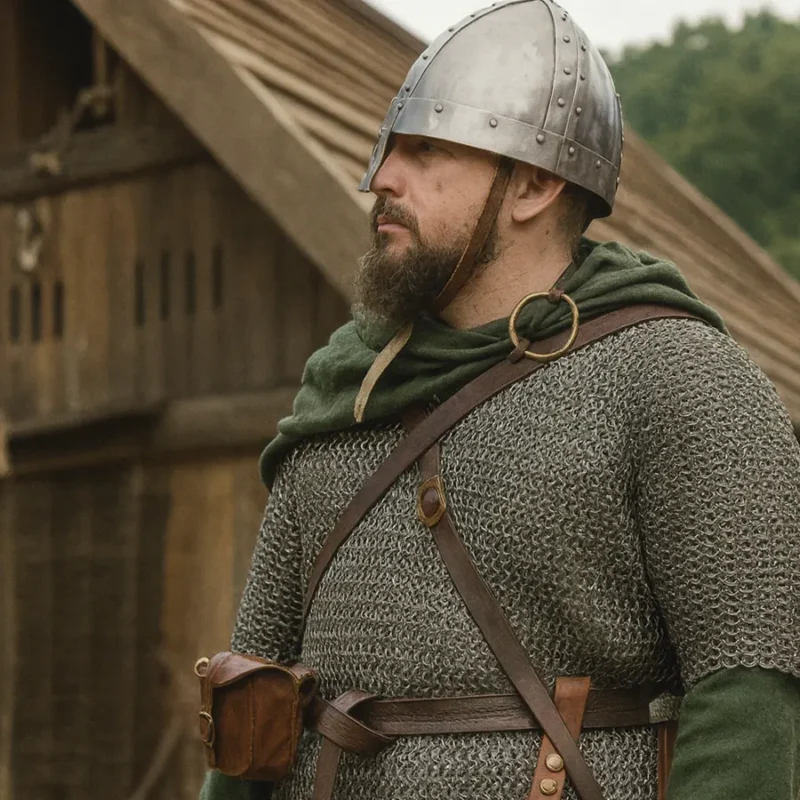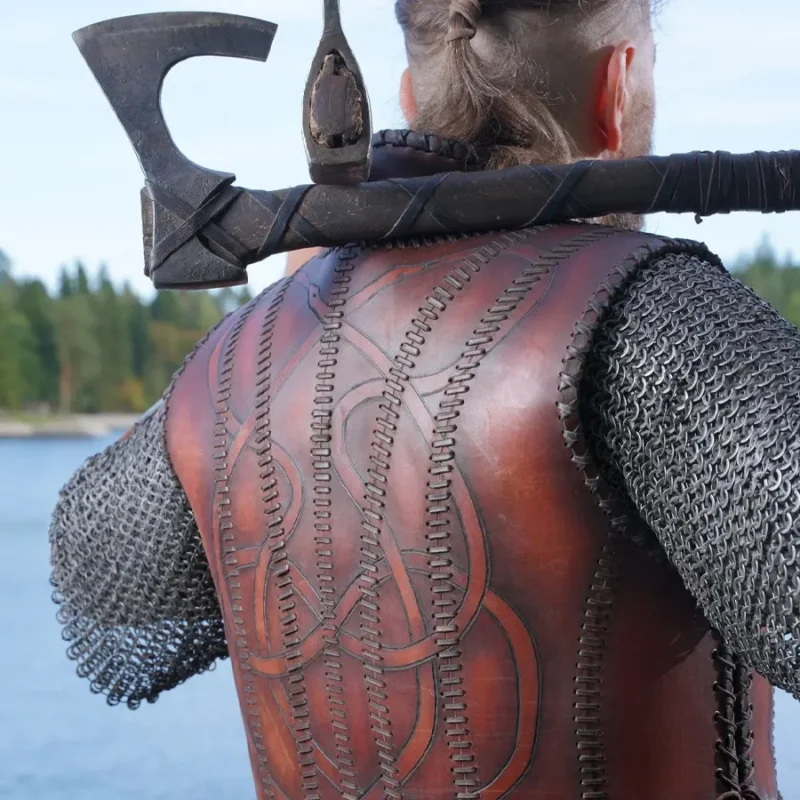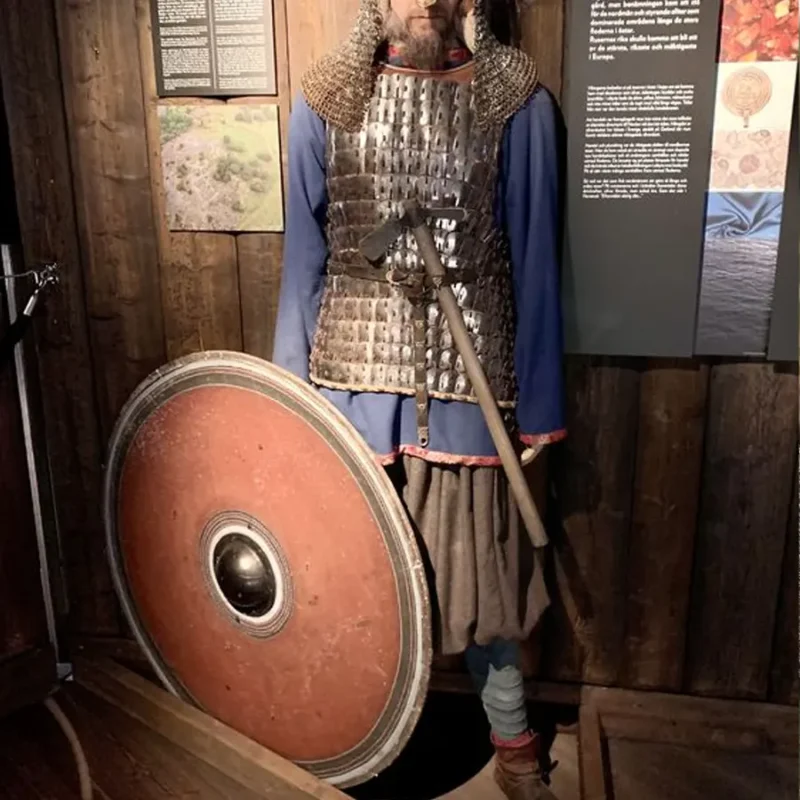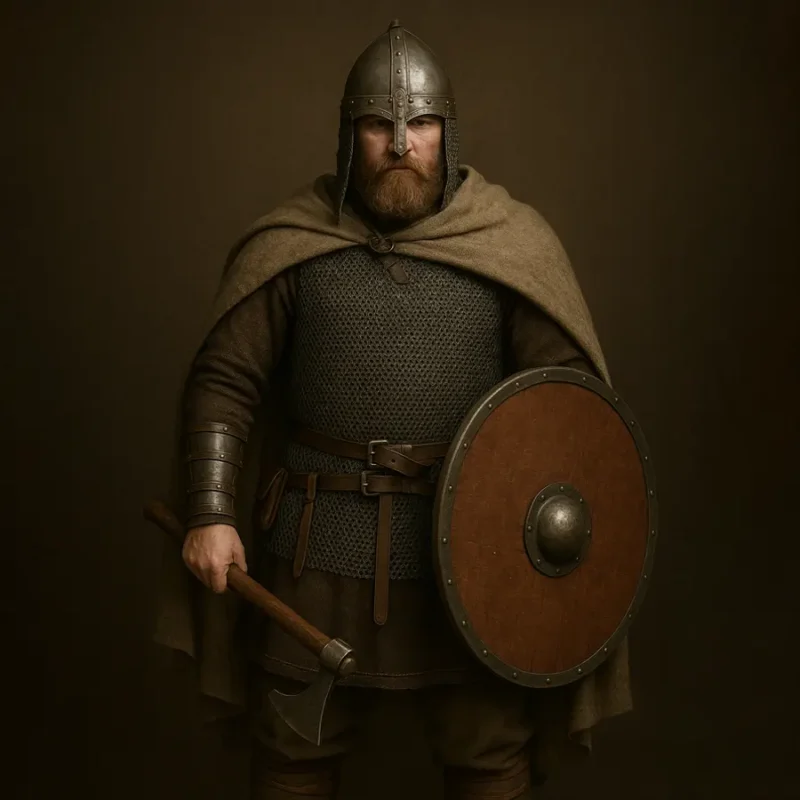Viking Blog
Norse Armor – 7 Powerful Types That Protected Viking Warriors
The Viking Age (793–1066 CE) was an era of exploration, conquest, and survival. Norse warriors faced brutal battles and harsh climates. They needed courage and protection. The Norse armor showed great practicality and skill. Craftsmen made it to withstand sword strikes, arrows, and the chaos of battle.
Norse armor was lighter than the heavy suits worn by medieval knights. It focused on mobility. Vikings valued speed and adaptability in combat, especially during raids and naval warfare. Here are seven strong types of Norse armor that built their famous reputation.
1. Chainmail – The Mark of the Elite
Chainmail, or byrnie, was one of the most valuable forms of Norse armor. Made of thousands of interlocking iron rings, it offered flexibility and strong protection. Because iron was expensive, only wealthy warriors or chieftains could afford it.
Chainmail shirts usually reached mid-thigh. People wore them over padded clothing to absorb shock. Artifacts from Gjermundbu in Norway show that mail armor signified rank and experience.

2. Leather Armor – The Common Warrior’s Shield
Most Vikings couldn’t afford metal armor, so they relied on thick leather as their main defense. This Norse armor came from tough animal hide. They treated it with wax or boiled oil to make it last longer.
Lightweight and flexible, leather armor allowed fast movement in battle. It was very popular with raiders and seafarers. They needed protection that was light and didn’t slow them down.

3. Lamellar Armor – Influenced by the East
Vikings met Byzantine and Eastern warriors through trade and raids. These warriors wore lamellar armor. Craftsmen laced small metal plates together to create it. This foreign design influenced late Viking military gear.
Lamellar Norse armor offered strong protection without the bulk of full plate. It mixed mobility and defense. This made it a symbol of warriors who ventured well beyond Scandinavia.

4. The Shield – The Most Essential Norse Defense
No piece of Norse armor was more important than the shield. Viking shields were round and lightweight. Craftsmen made them from wood, usually linden or pine, and reinforced them with iron rims. This design made them very versatile.
They could block blows, deflect arrows, and push enemies back using offensive tactics. The shield was iconic. That’s why “shield wall” became a term for Viking battle tactics.
5. Helmets – The Symbol of the Warrior
The Norse armor set was incomplete without a helmet. Contrary to popular myth, real Viking helmets didn’t have horns. They were practical, usually made of iron with a rounded dome and a nose guard.
The most famous example, the Gjermundbu helmet, proves how functional Viking headgear is. It protected the face and skull while remaining light enough for long campaigns. The helmet became a symbol of courage and leadership.
6. Gambeson – The Hidden Layer of Protection
Beneath their outer armor, Vikings wore a padded jacket called a gambeson. Craftsmen made this simple yet vital piece of Norse armor from layers of linen or wool.
The gambeson absorbed shock and prevented chafing from chain mail or leather. Even without metal armor, it offered good protection and warmth. This was key during northern winters or sea trips.
7. Cloaks and Furs – Practical Armor Against the Elements
Vikings didn’t battle human enemies—they fought nature itself. Heavy wool cloaks and fur garments acted as soft armor against the cold, wind, and rain.
These garments weren’t protective in battle, but they were key to Norse armor for daily life. They showed adaptability and resilience. These qualities defined the Norse spirit like their weapons did.
The Craftsmanship Behind Norse Armor
Creating armor required skill, resources, and time. Blacksmiths forged iron rings and plates by hand, while tanners prepared durable hides. Skilled artisans crafted every piece of Norse armor. They focused on strength, comfort, and efficiency.
Armor was personal. Many warriors customized their gear with runic carvings, animal designs, or decorative stitching. They did this to seek protection from gods like Odin and Thor.
Why Norse Armor Still Inspires Us
The appeal of Norse armor lies in its perfect mix of practicality and mythology. Each item, such as chainmail and cloaks, reflects Viking life. They show bravery, endurance, and ingenuity.
Modern historians, reenactors, and artists study Viking armor. They admire its craftsmanship and its meaning. It symbolizes the courage to face chaos with strength and wisdom.
Norse armor shows power and adventure in popular culture, like films and video games. True protection doesn’t always come from heavy metal. It comes from courage, skill, and identity.
Conclusion – The Legacy of Norse Armor
Norse armor ranged from basic leather tunics to detailed chainmail and iron helmets. It shielded one of history’s bravest civilizations. It was never about decoration—it was about survival.
Each piece of armor holds centuries of experience. It links warriors to their ancestors and their gods. Today, Norse armor stands as a symbol of strength, skill, and the Viking spirit.

